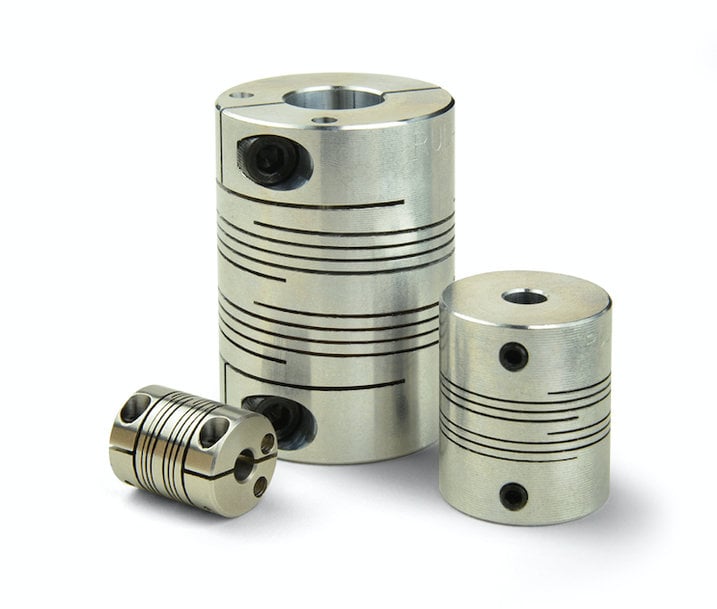www.industryemea.com
21
'23
Written on Modified on
Ruland offers beam coupling solutions for robotics applications
Ruland offers four-beam and six-beam couplings for encoders and light-duty power transmission, enabling robotic designers to create standard beam couplings for most systems.

Ruland machines beam couplings from a single piece of aluminum or stainless steel for a zero-backlash design and maintenance-free service life. Multiple sets of spiral cuts enable Ruland beam couplings to handle all forms of misalignment – angular, parallel, axial motion, and complex – through frequent starts and stops. The multiple-beam design also allows for higher torque and torsional stiffness than commodity-style single-beam couplings. Ruland manufactures beam couplings in 7075 aluminum for low inertia and 303 stainless steel for increased torque capacity.
Ruland F-Series six-beam couplings have two sets of three beams allowing them to maintain accuracy, repeatability, and reliability in robotic systems. They have larger body sizes than comparable four-beam couplings for increased torque and torsional stiffness. F-series clamp-style beam couplings are supplied with Ruland’s proprietary Nypatch anti-vibration hardware to prevent screws from loosening during operation.
Ruland P- and MW-Series four-beam couplings have two sets of two beams for increased flexibility and reduced bearing loads compared to the six-beam style. They also have shorter lengths, making them suitable for space-restricted applications commonly found in encoders. MW-Series couplings have nominal metric dimensions to better fit with systems with metric components.
Ruland offers beam couplings with a clamp or set screw hub attachment with inch, metric, and inch-to-metric combinations ranging from 1/8 inch to ¾ inch and 3 mm to 20 mm. They are manufactured in Ruland’s Marlborough, Massachusetts factory under strict controls using proprietary processes. Non-standard designs such as anodizing, non-standard bore sizes, and special tolerances are available upon request.
Beam couplings are part of Ruland’s complete zero-backlash coupling line, including rigid, bellows, disc, jaw, oldham, controlflex, and slit couplings. Full product information, 3-D CAD files, and additional technical specifications are available.
Why Ruland beam couplings for robotics?
Ruland F-Series six-beam couplings have two sets of three beams allowing them to maintain accuracy, repeatability, and reliability in robotic systems. They have larger body sizes than comparable four-beam couplings for increased torque and torsional stiffness. F-series clamp-style beam couplings are supplied with Ruland’s proprietary Nypatch anti-vibration hardware to prevent screws from loosening during operation.
Ruland P- and MW-Series four-beam couplings have two sets of two beams for increased flexibility and reduced bearing loads compared to the six-beam style. They also have shorter lengths, making them suitable for space-restricted applications commonly found in encoders. MW-Series couplings have nominal metric dimensions to better fit with systems with metric components.
Ruland offers beam couplings with a clamp or set screw hub attachment with inch, metric, and inch-to-metric combinations ranging from 1/8 inch to ¾ inch and 3 mm to 20 mm. They are manufactured in Ruland’s Marlborough, Massachusetts factory under strict controls using proprietary processes. Non-standard designs such as anodizing, non-standard bore sizes, and special tolerances are available upon request.
Beam couplings are part of Ruland’s complete zero-backlash coupling line, including rigid, bellows, disc, jaw, oldham, controlflex, and slit couplings. Full product information, 3-D CAD files, and additional technical specifications are available.
Why Ruland beam couplings for robotics?
- Zero-backlash for precise motion control
- Six-beam and four-beam couplings available in aluminum or stainless steel
- Increased torque and torsional stiffness when compared to single beam couplings
- RoHS3 REACH, and Conflict Minerals compliant
- Manufactured and inventoried in Ruland’s Marlborough, Massachusetts factory.

